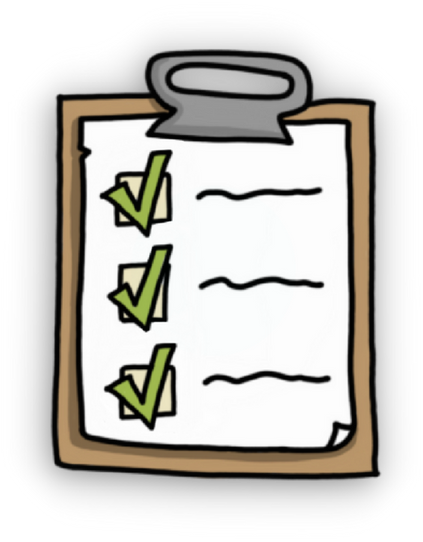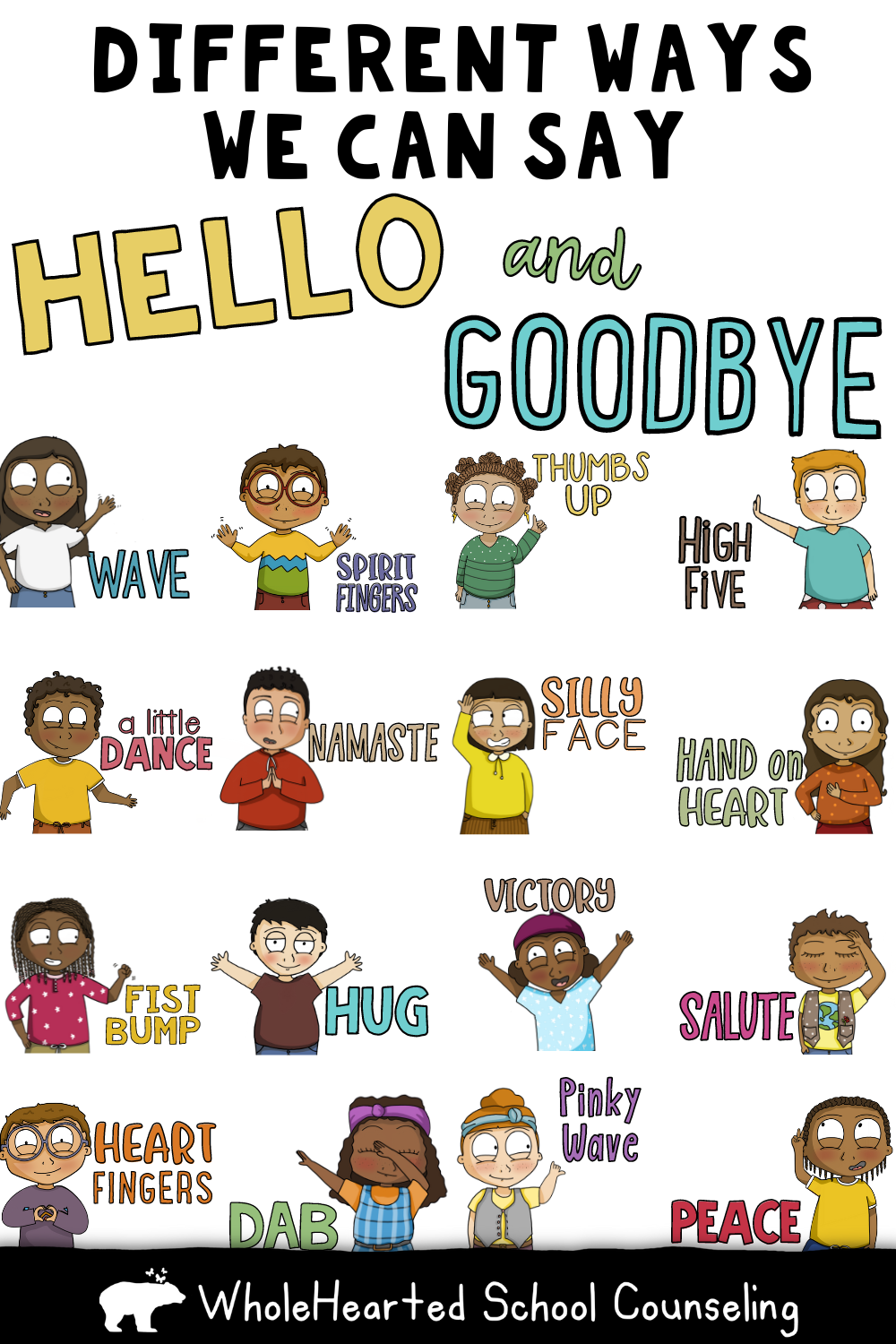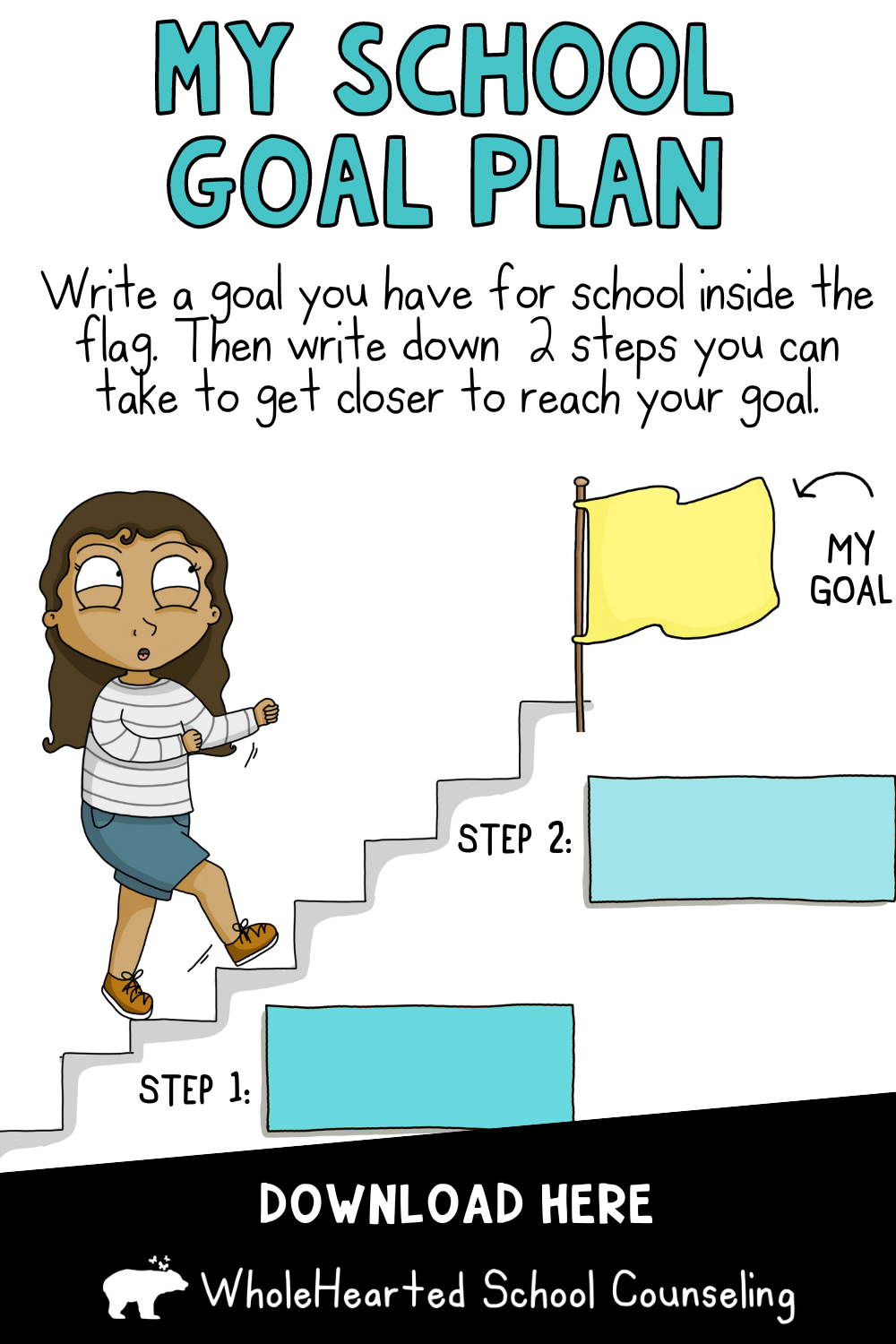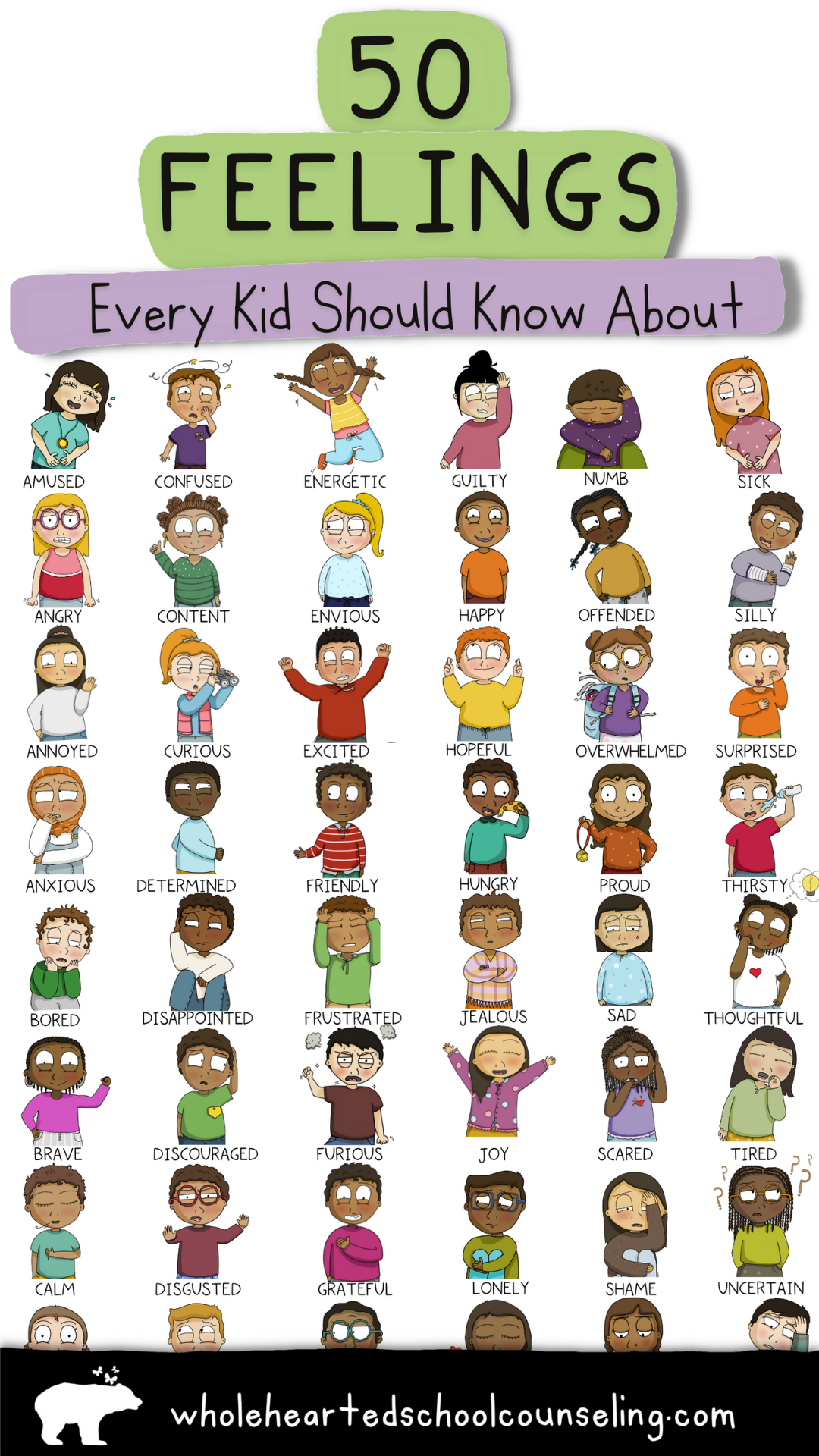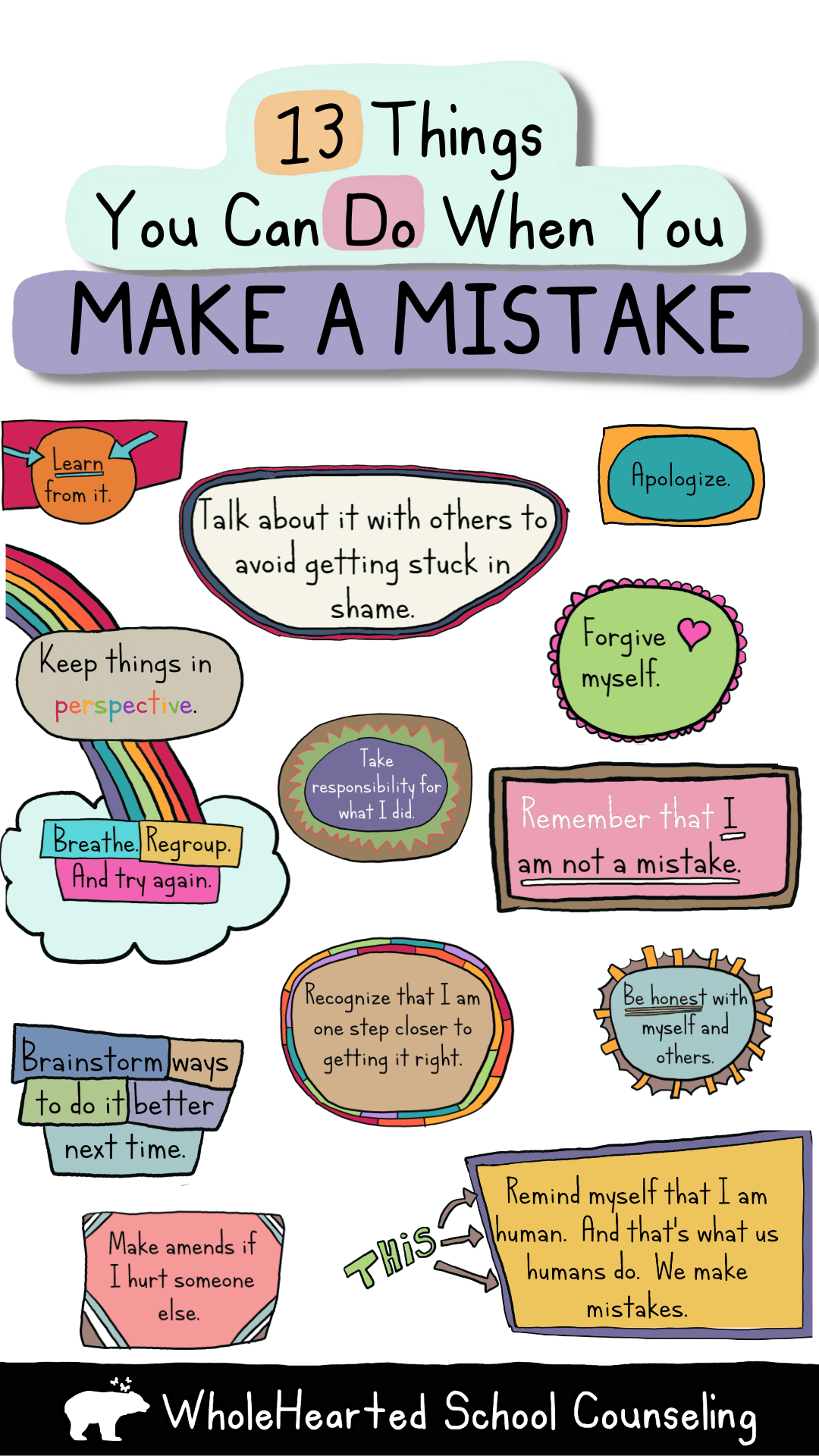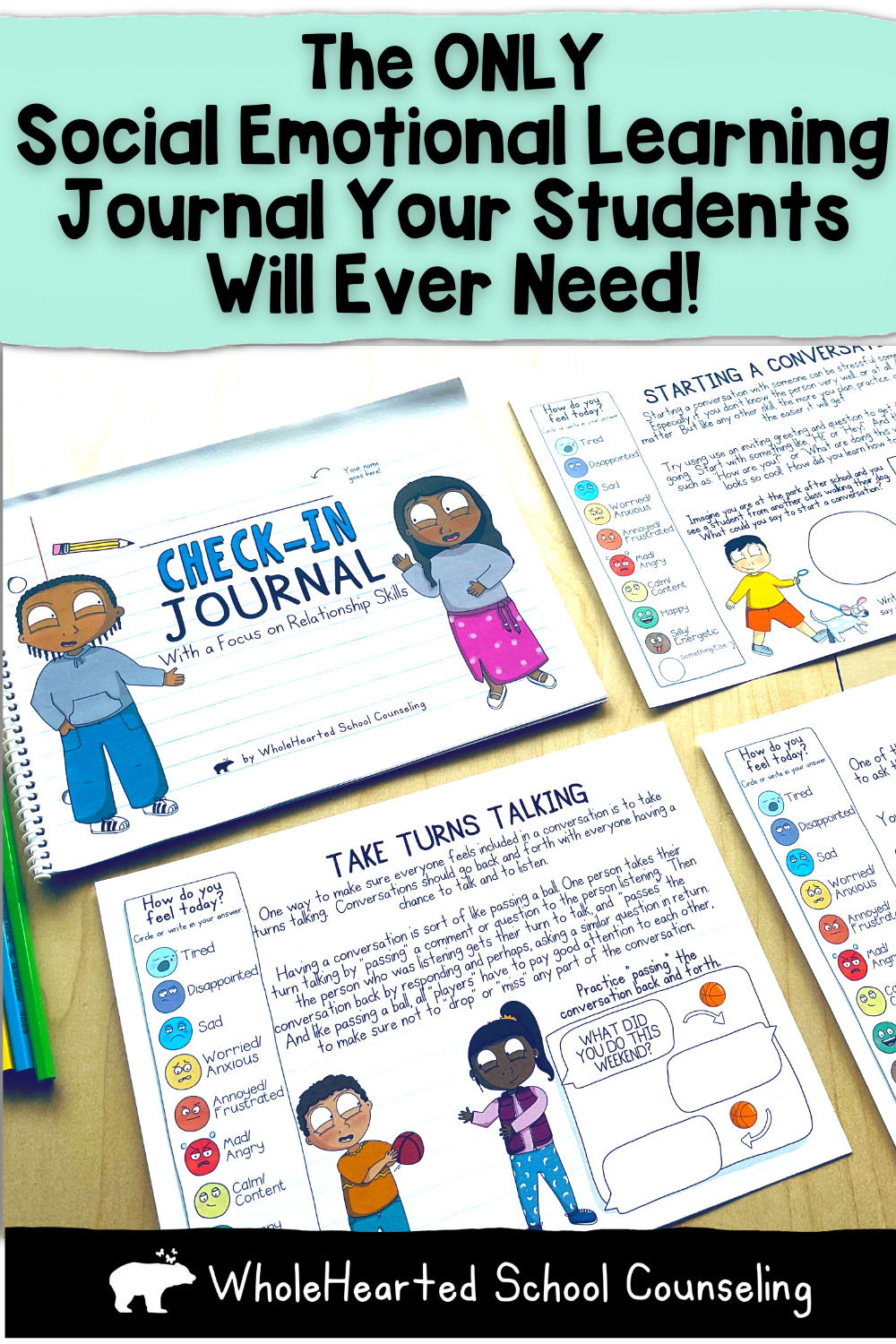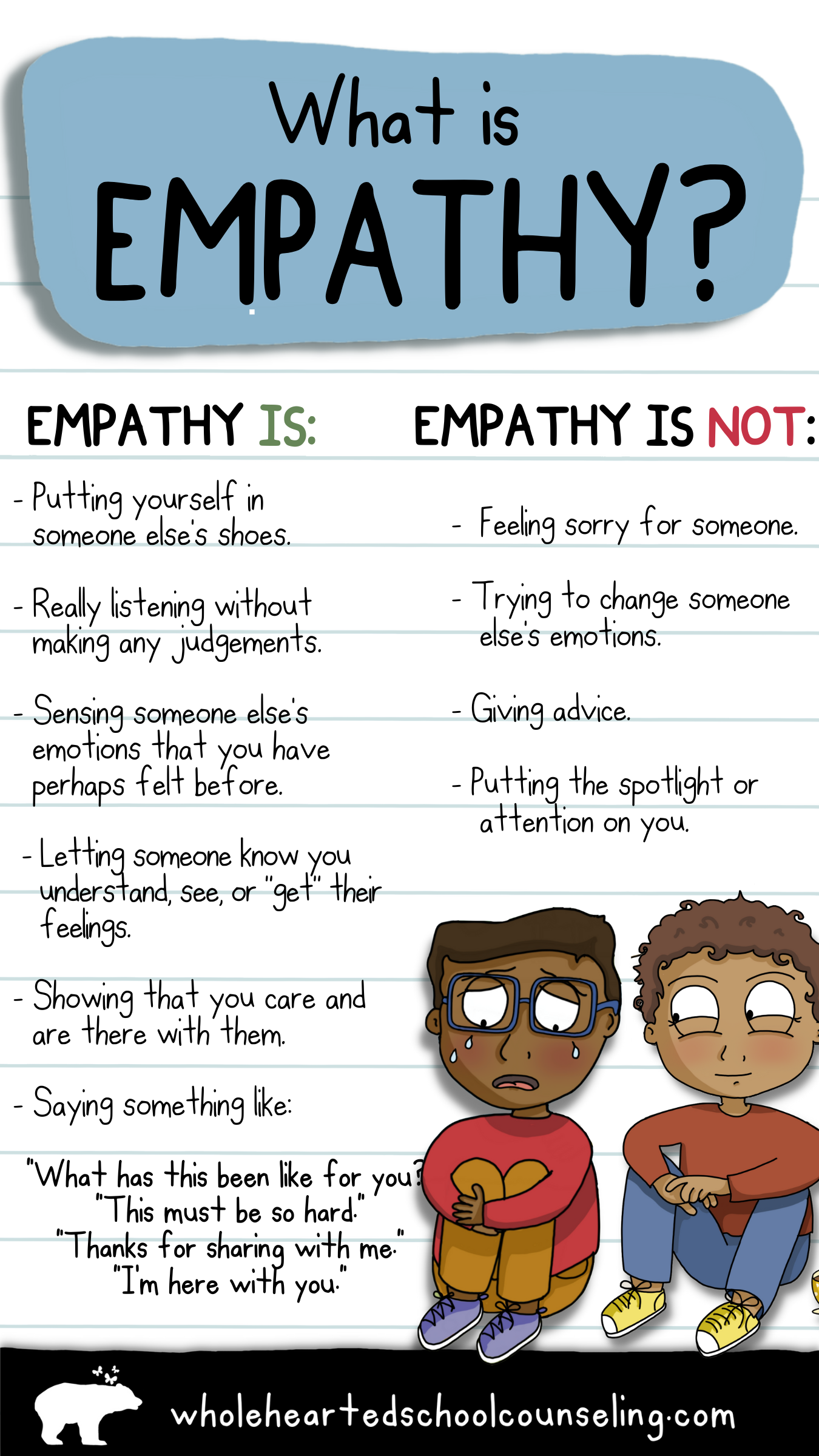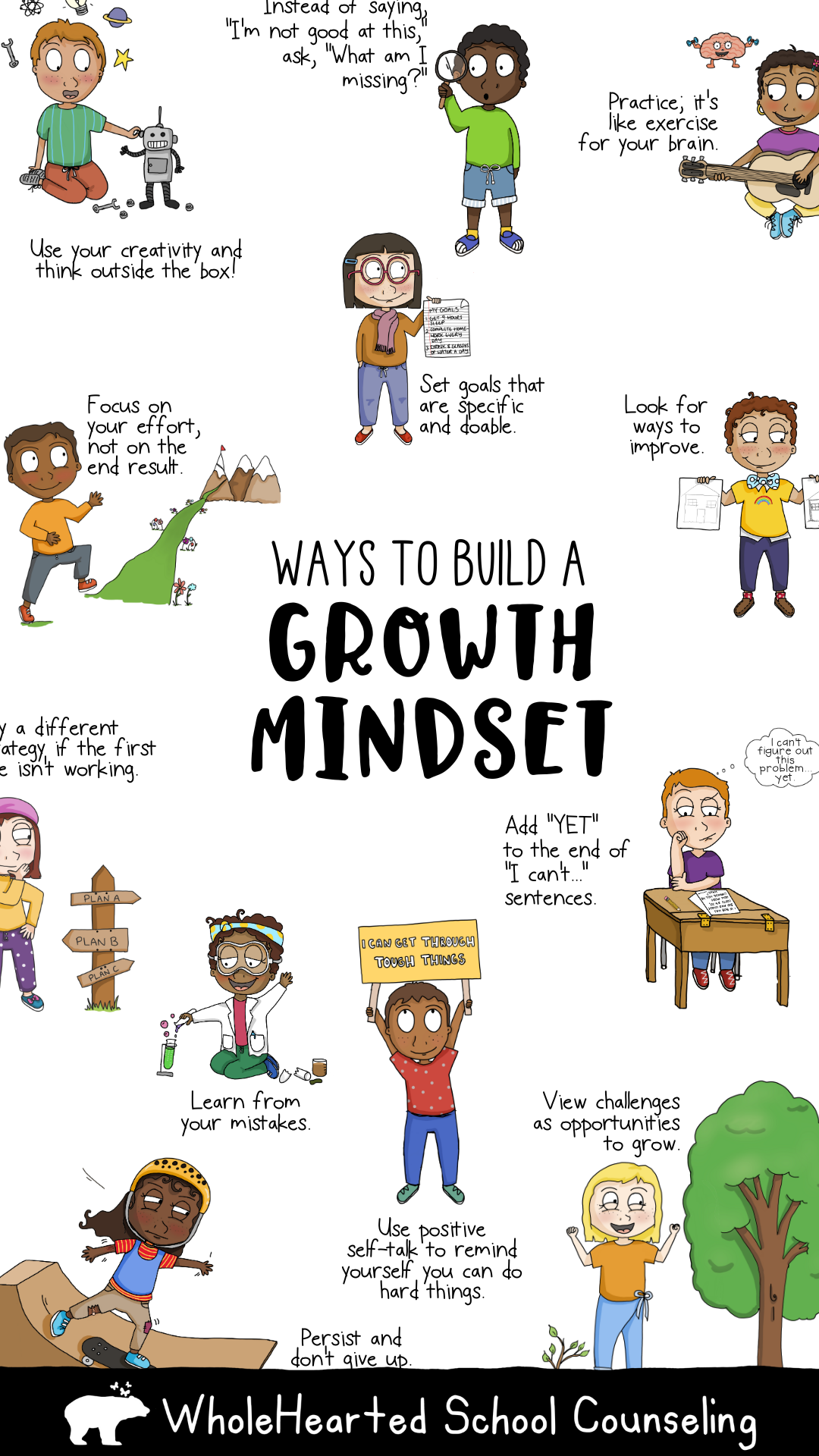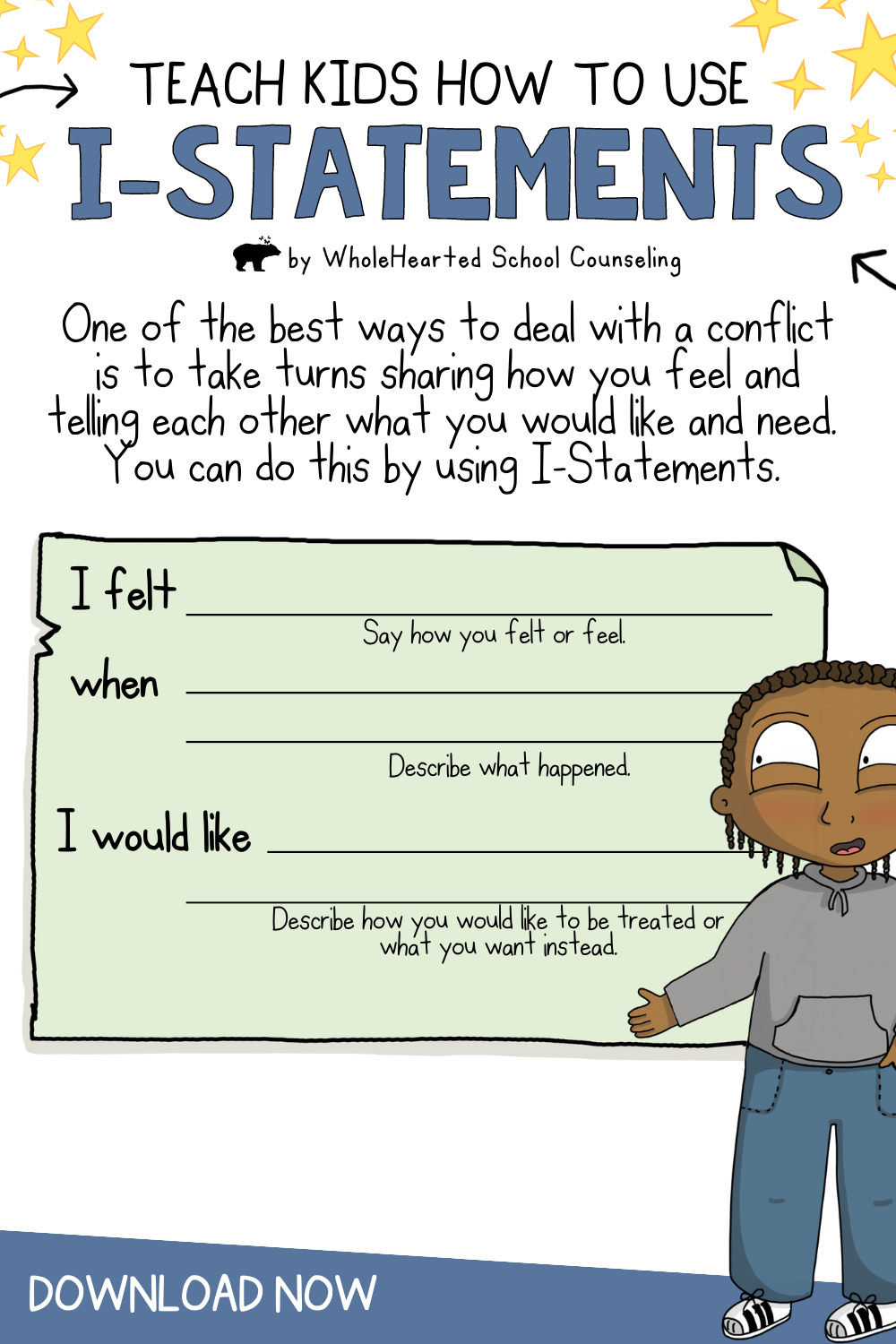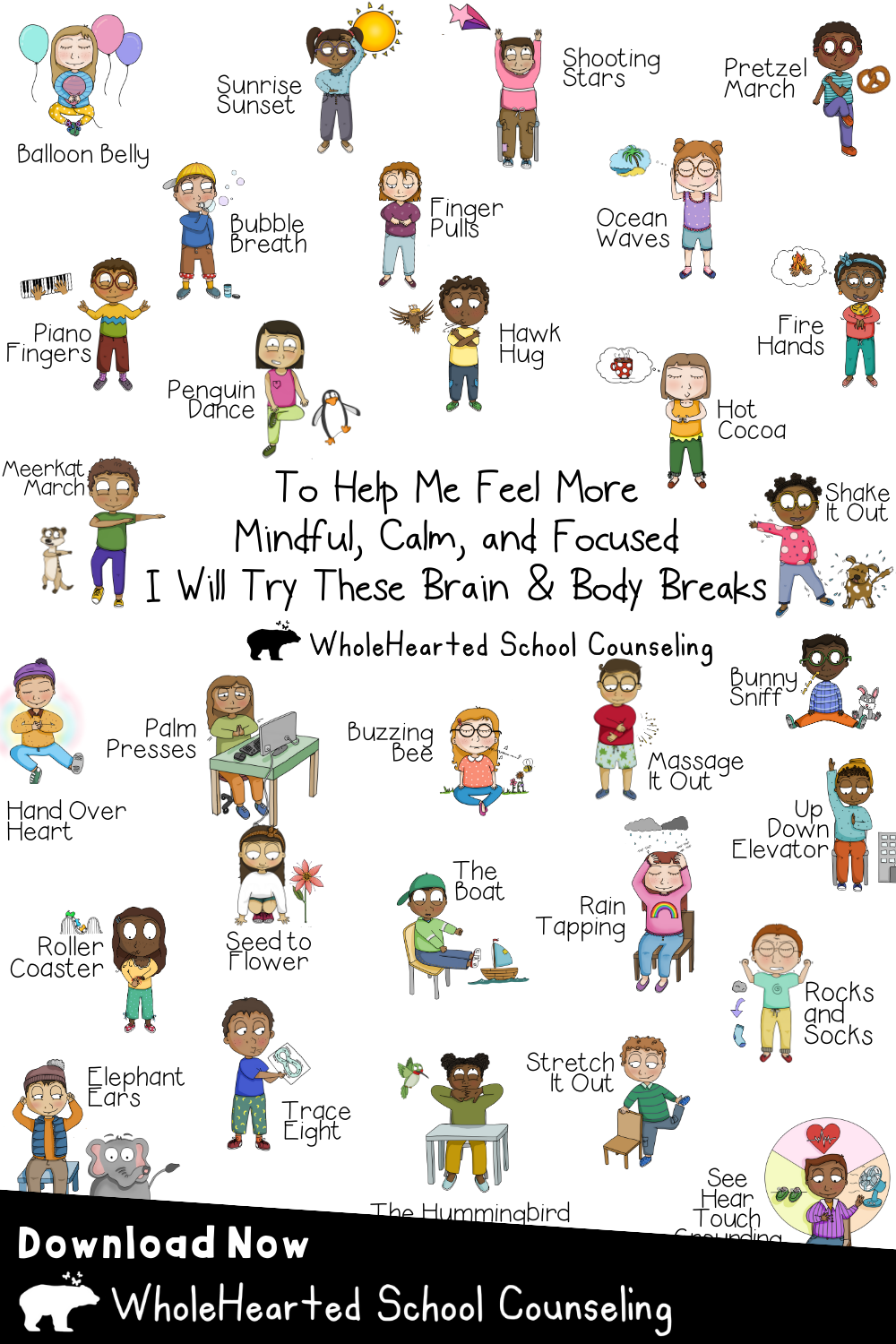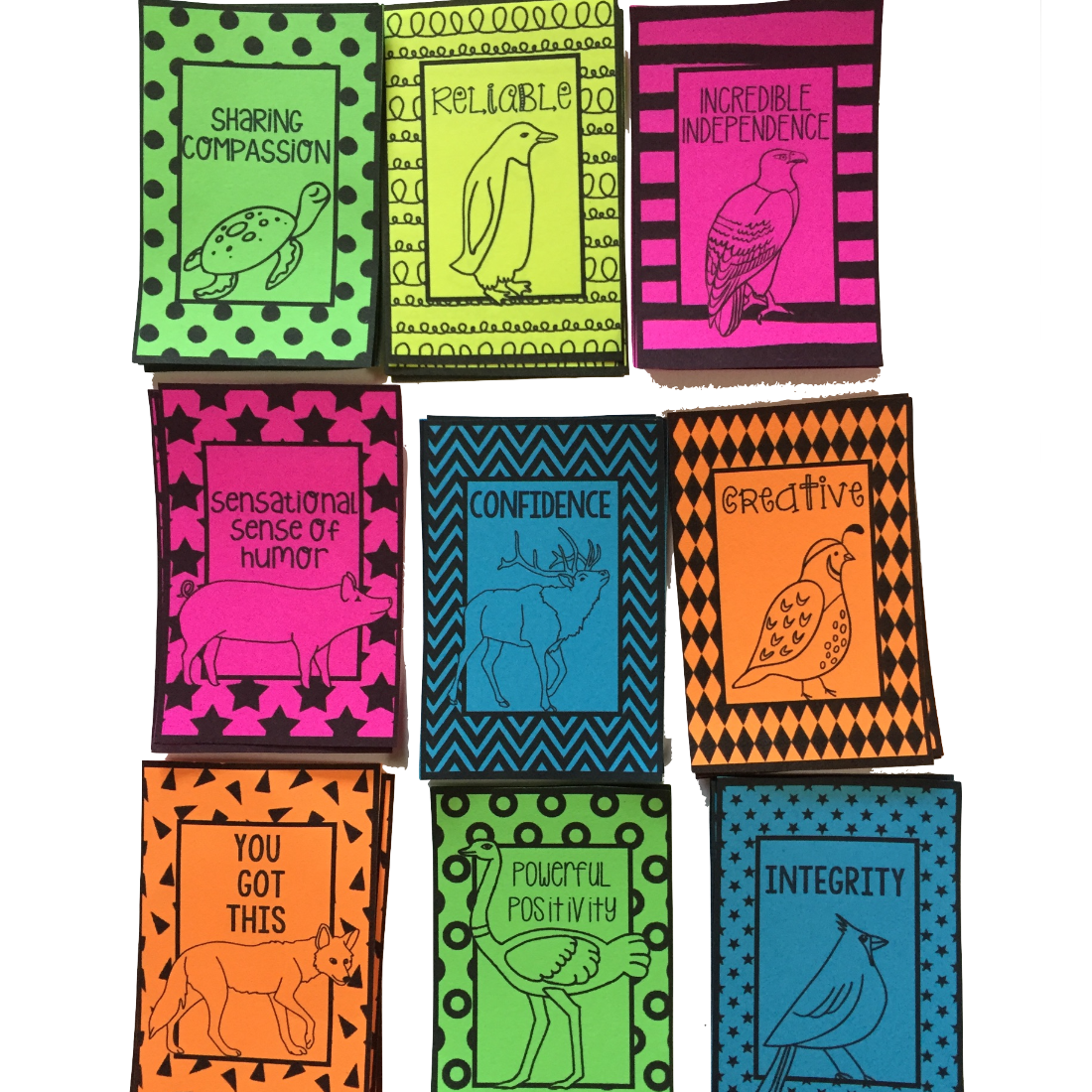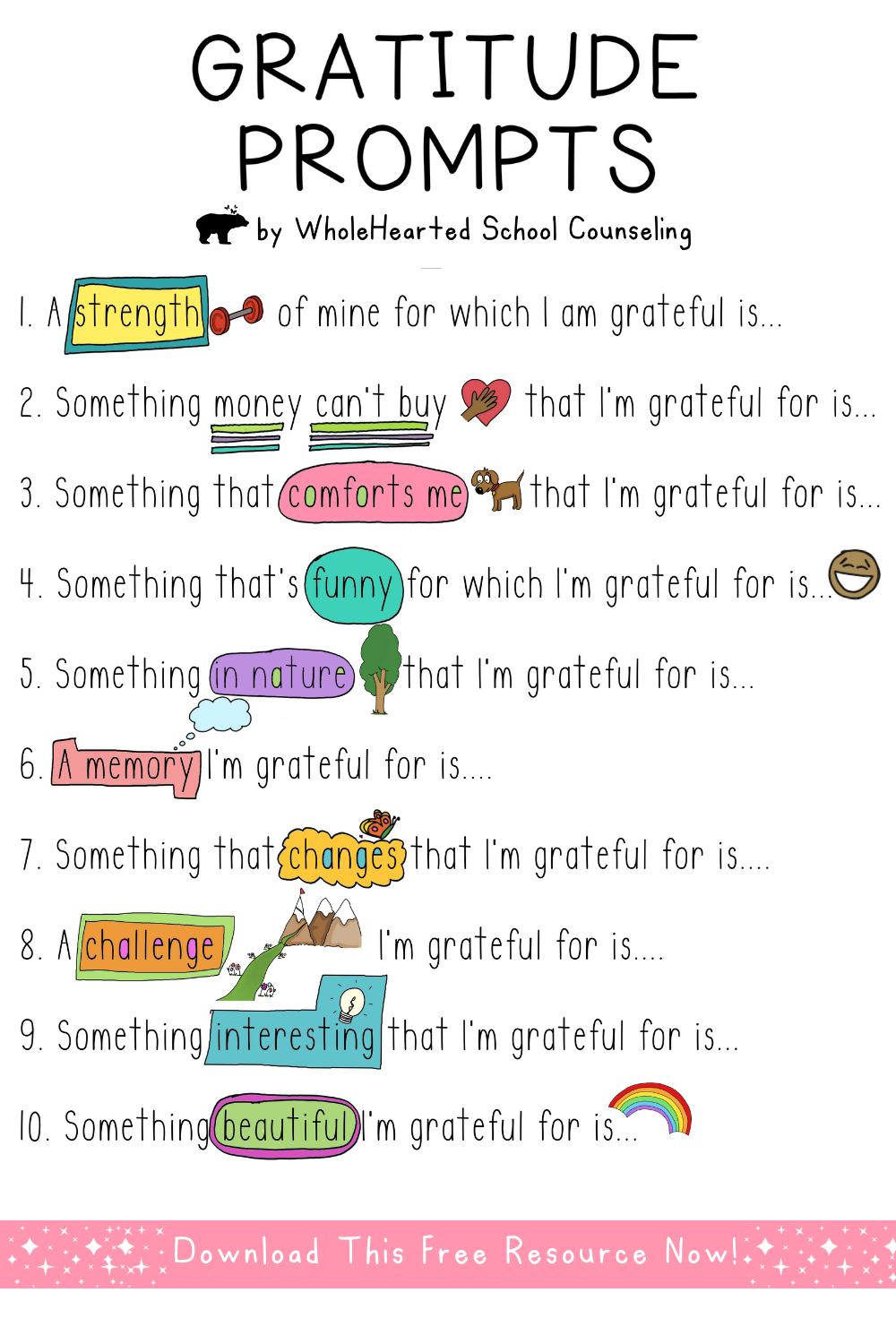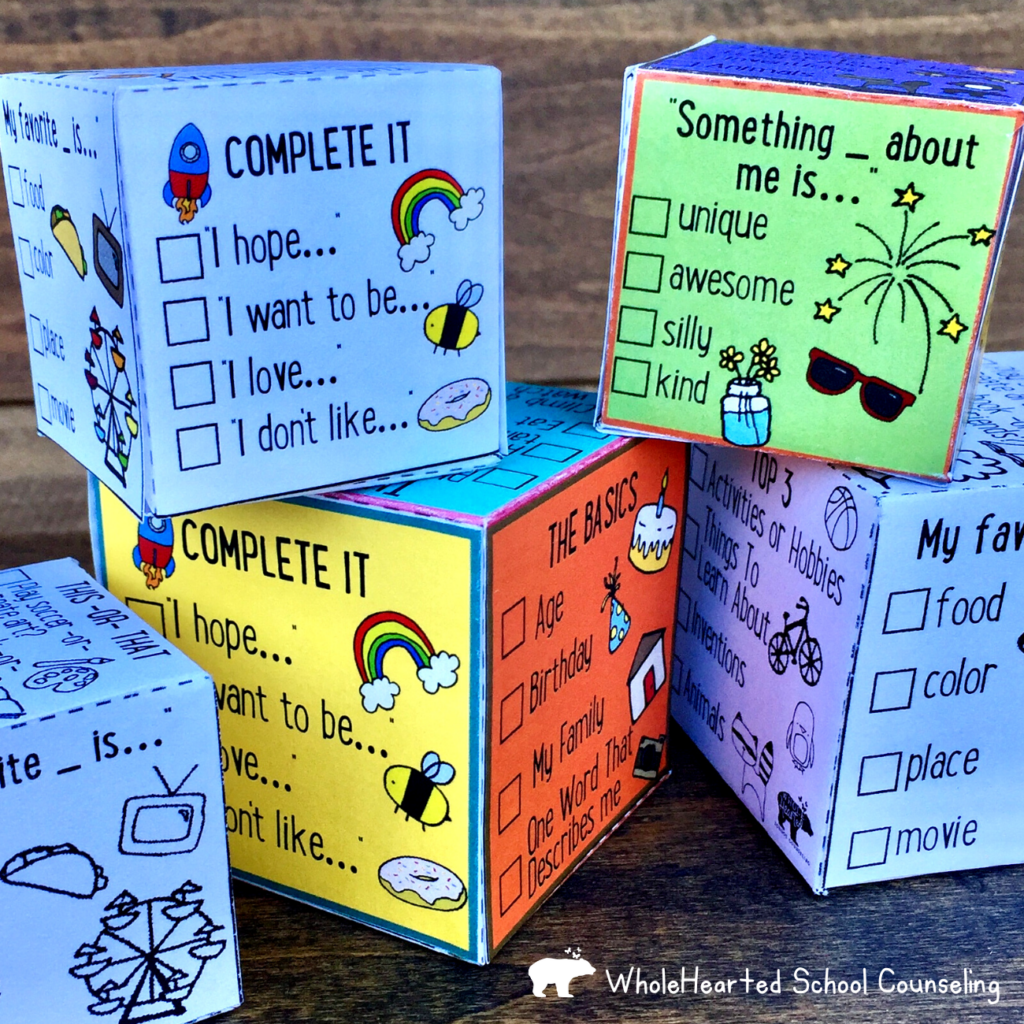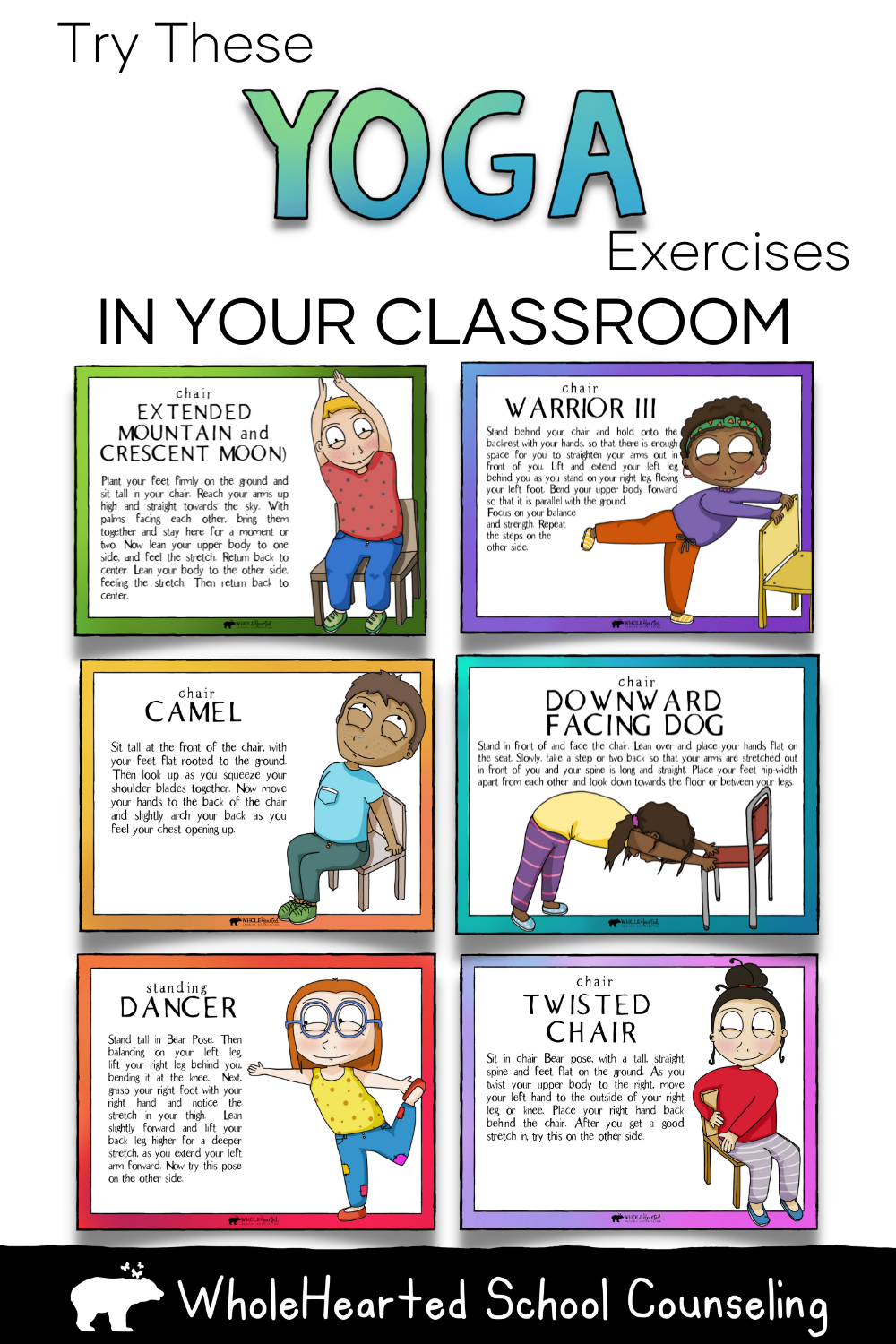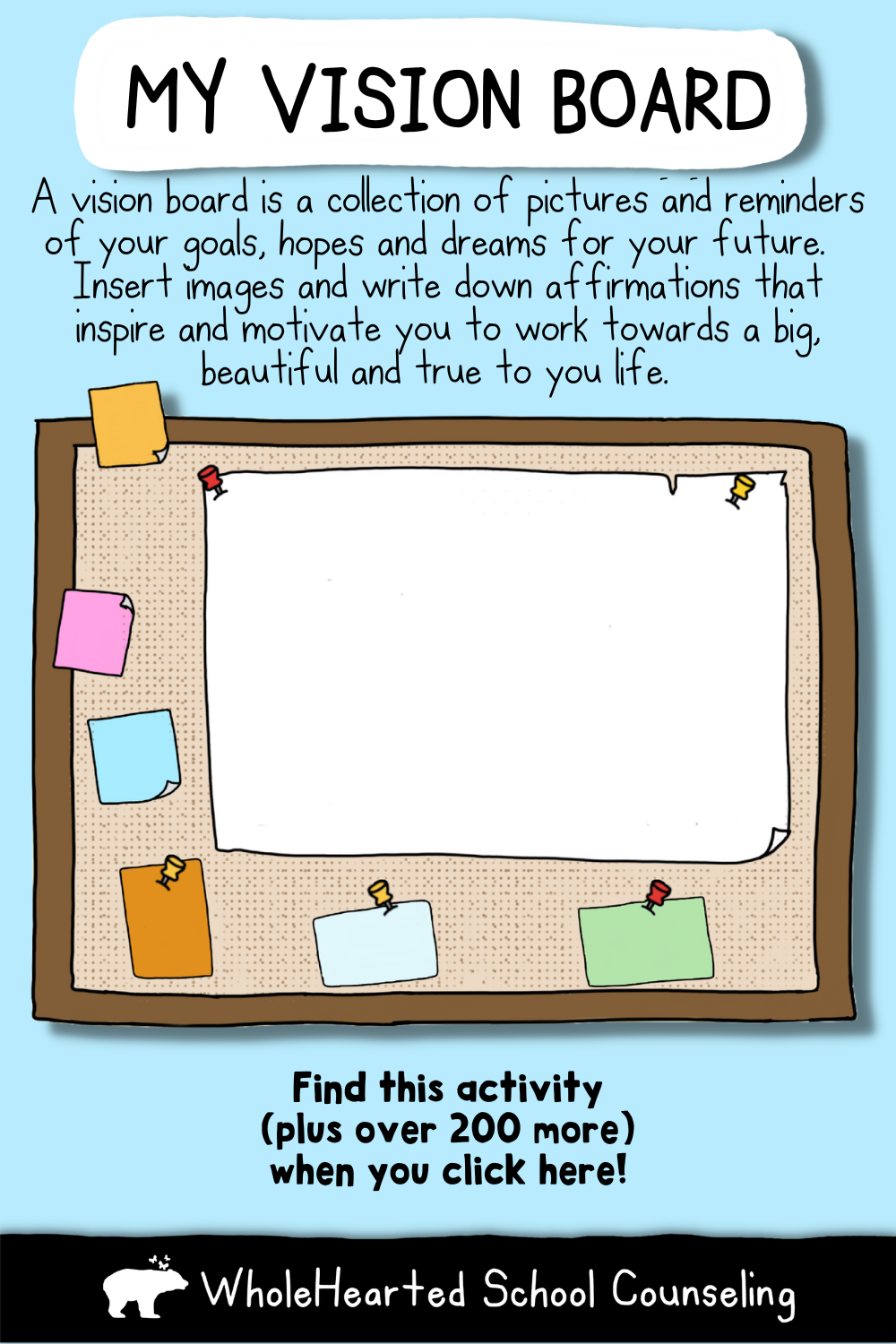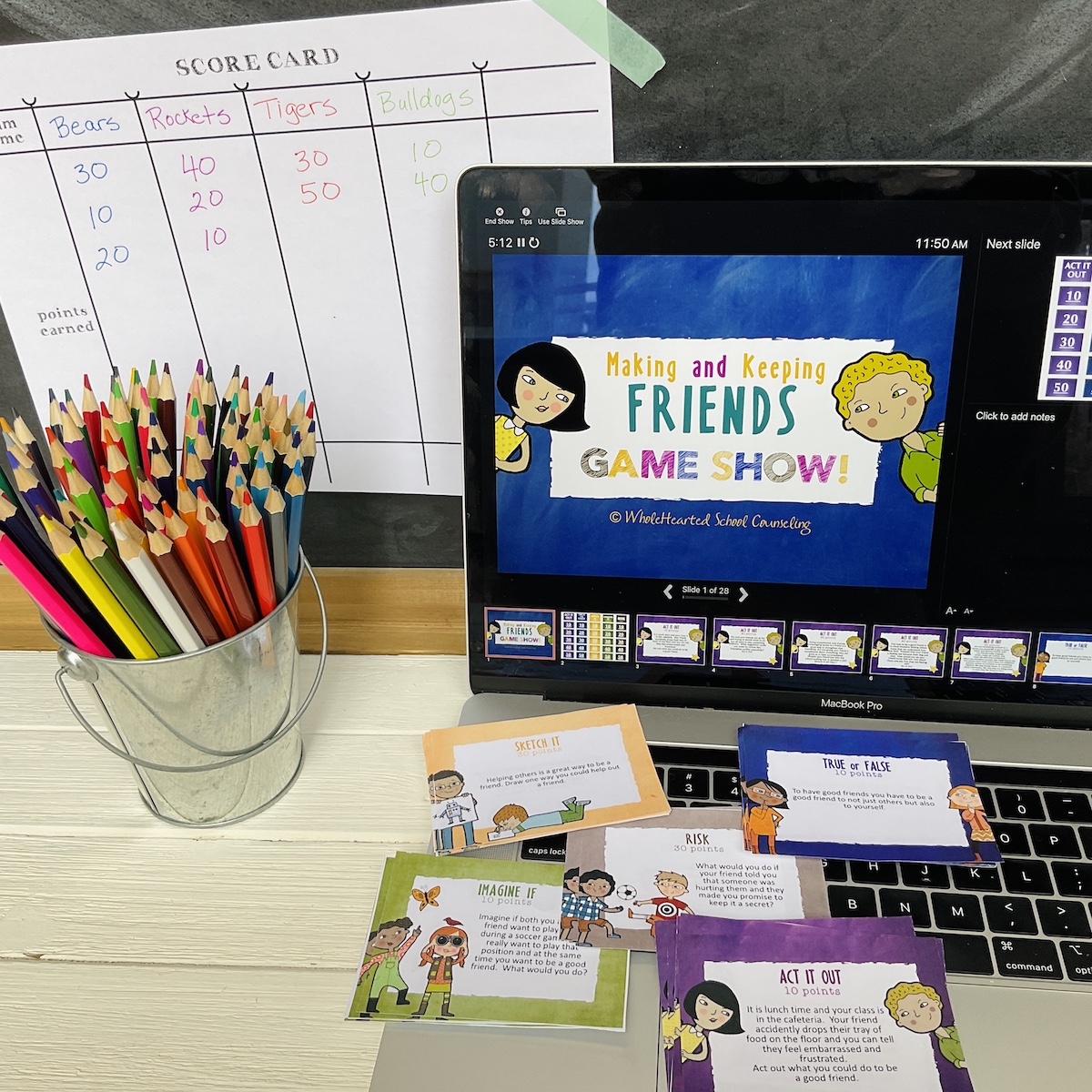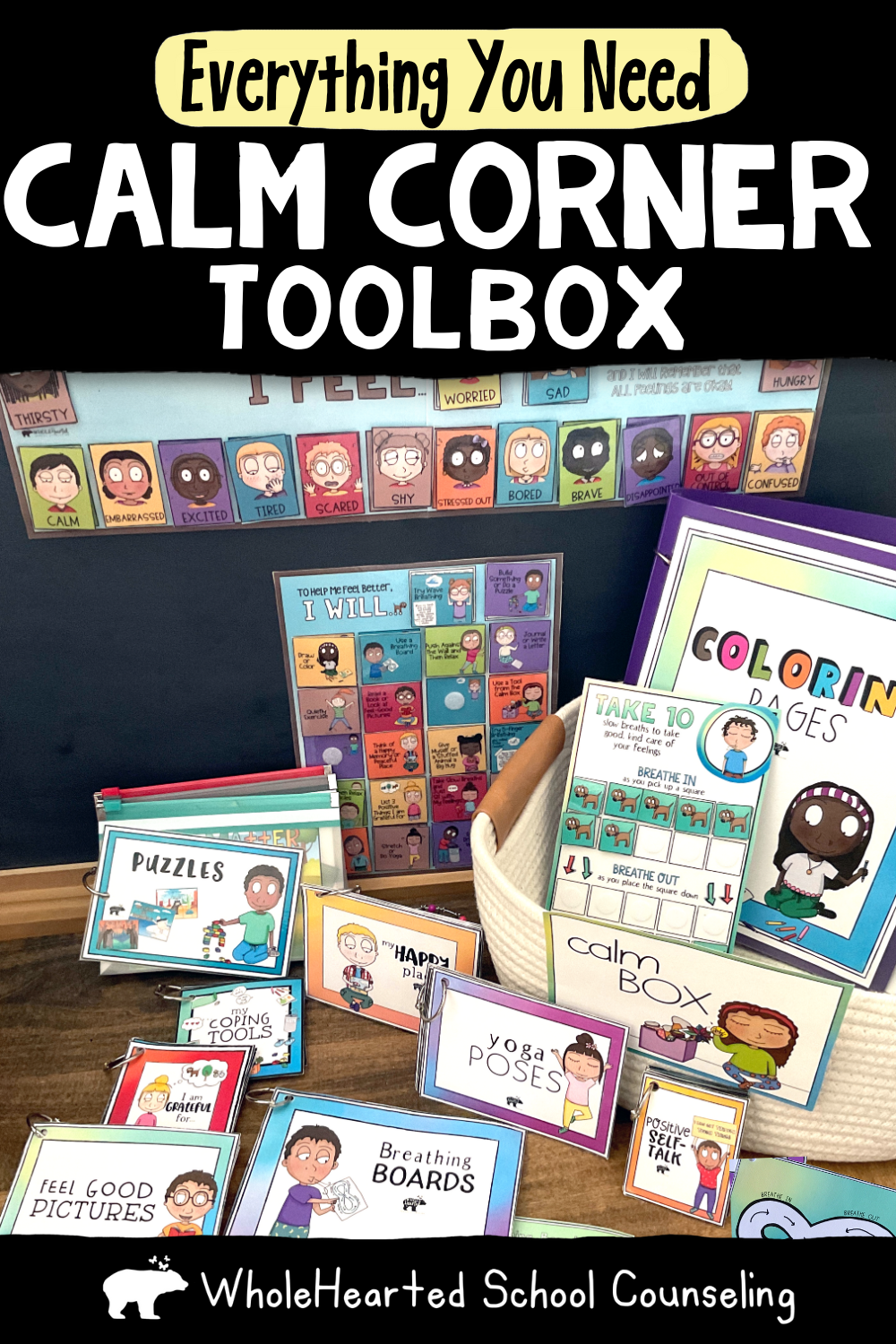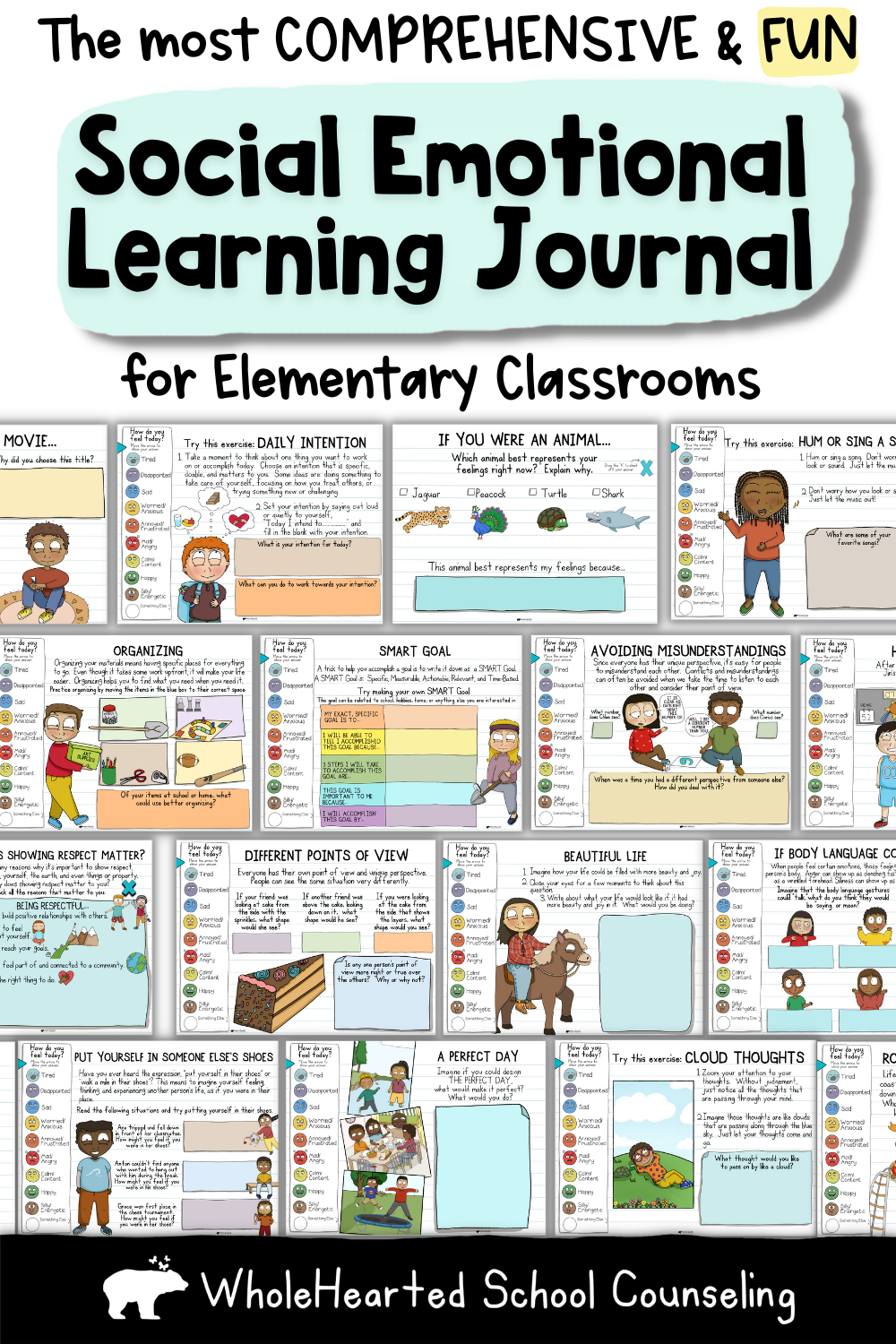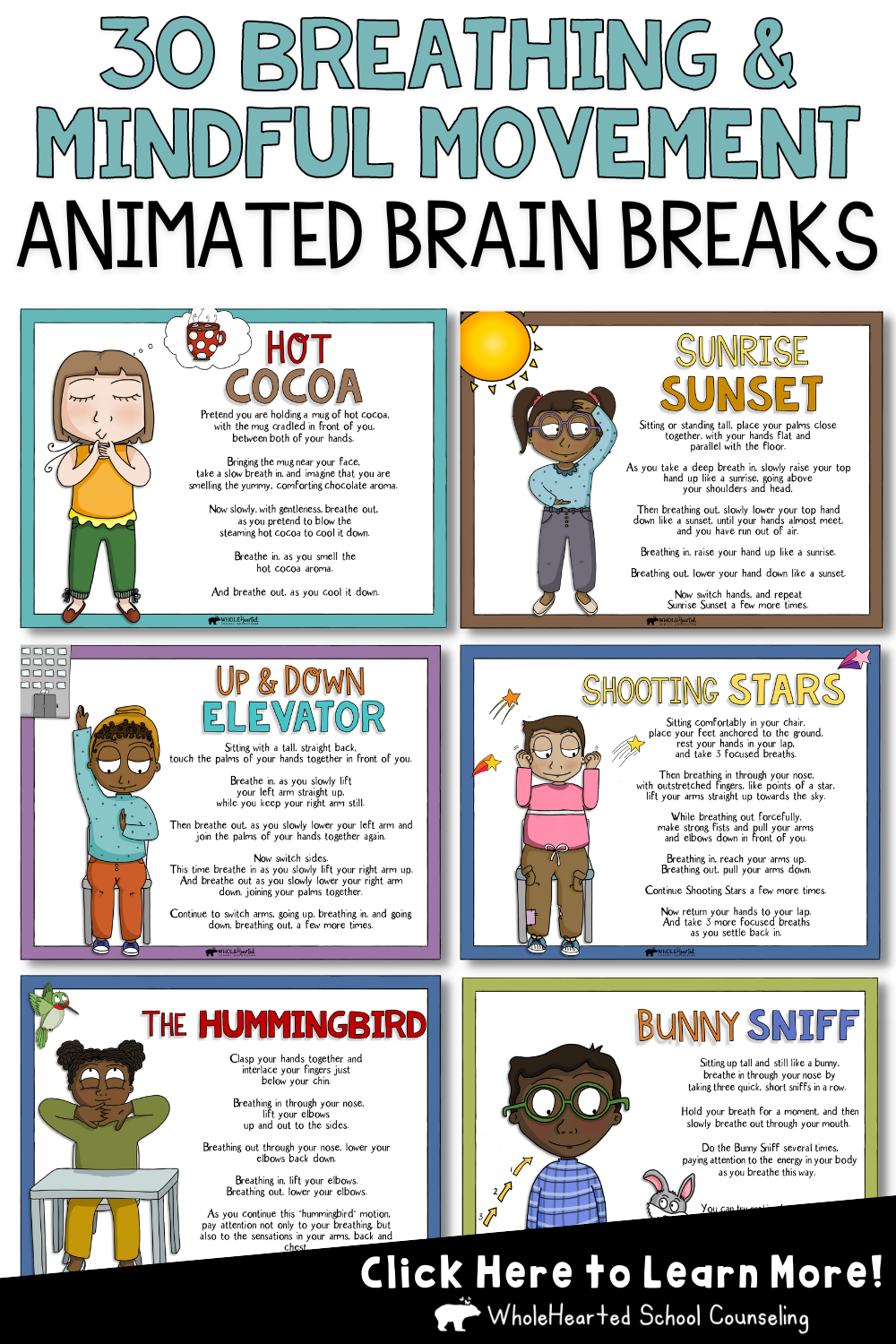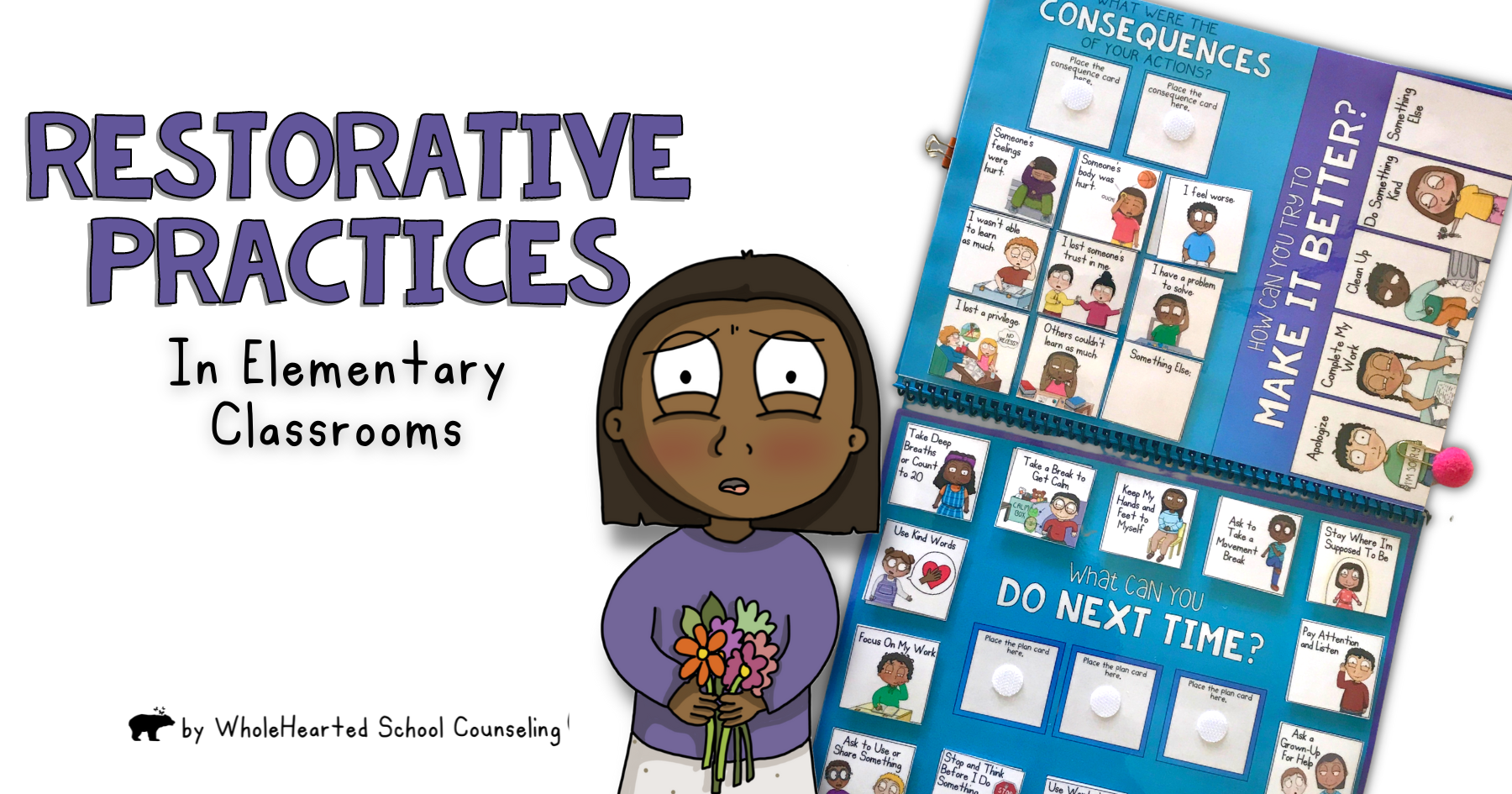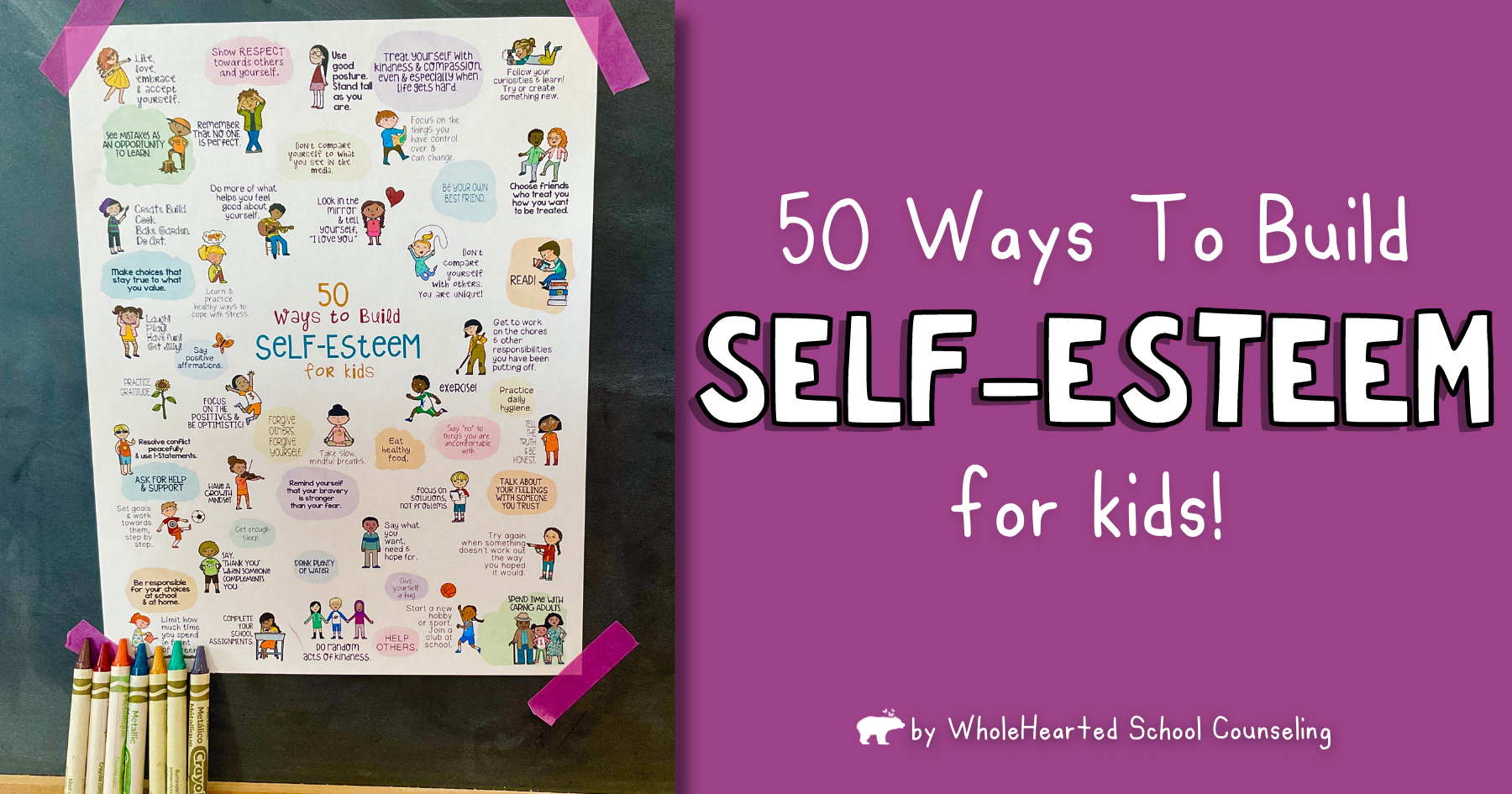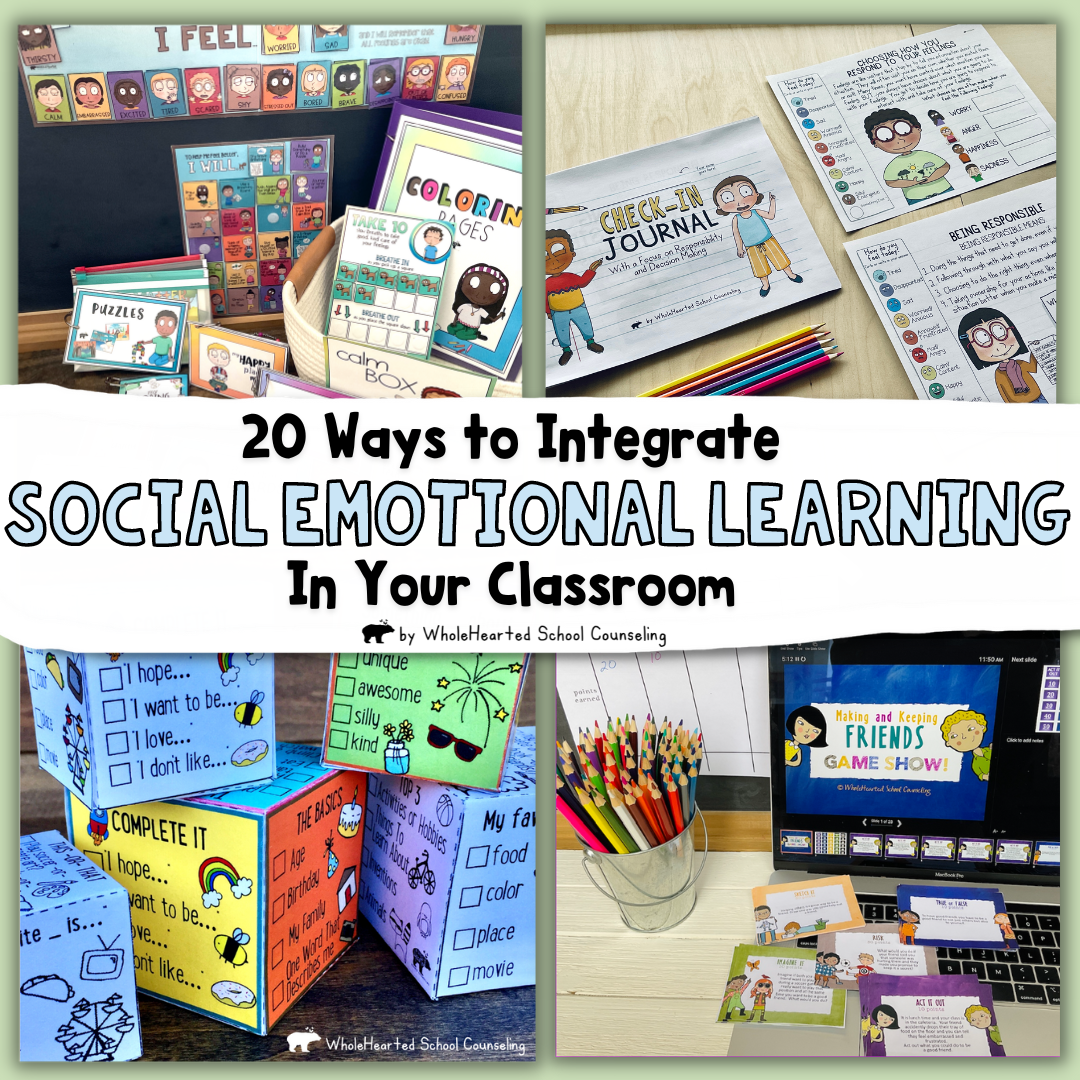
SIMPLE TIPS TO BRING SEL INTO THE CLASSROOM
Social Emotional Learning can drive your classroom climate and enhance your classroom management system. It encourages positive interaction with each other and with adults. SEL teaches students different skills that help them to be in control of their actions, even when feeling uncomfortable or explosive emotions. Moreover, using social emotional learning in your classroom promotes a foundation of empathy, compassion, growth mindset, responsibility, executive functioning, and healthy social connections.
The 5 CASEL Social Emotional Learning Competencies are: Self-Awareness, Self Management, Social Awareness, Relationship Skills, and Responsible Decision Making.
Because success with implementing social emotional learning has so many individual and classroom benefits, I’ve put together a list of 20 simple ways to integrate SEL into your everyday classroom routines.
1. Start with a Greeting!
One basic way to build relationship skills is to genuinely greet each of your students, each day. In addition to have them practice greeting each other, too! Having a daily routine which acknowledges each student is a wonderful -and simple- way to connect.
Plus, there are tons of fun ways to say “Hi!” without even saying “Hi”! From Hand on Heart to High Fives to the Pinky Wave and Fist Bump, you and your students are sure to find unique greetings that will bring a smile to everyones’ face.
One of the ways lots of teachers do this is just to stand at the door and as each student walks in, to invite them to choose which greeting they’d like to do. Or use fun greetings as a transition activity to morning meetings or circle time. Need to get your students moving? Set a timer for 3 minutes, have each student move around the room greeting each other in different ways. And then when the timer goes off, students quietly join you on the carpet.
2. Set Subject Specific Goals
I bet you didn’t know that you were inadvertently teaching an SEL lesson when you routinely read aloud your learning objectives? This has become common practice because we know that kids retain the information more efficiently when they know what they are shooting for!
Setting goals, small and large, models responsible decision making. It also encourages task completion and self-motivation.
An example of a small ELA goal could be to finish 10 pages in their book during silent reading or to complete 5 examples of place value story problems during Math rotations.
When students begin an activity knowing what their goals are, they are more likely to stay focused and increase achievement.
3. Identify Feelings Throughout the Day
The more we talk about feelings and give them a name, the easier it is to recognize what causes the feeling in ourselves and others. Building a bank of feeling vocabulary words helps with emotional regulation, empathy, and social awareness.
We often ask, “How are you?” and kids’ first response is “good” or “bad.” Explore this deeper and provide additional words to help the student more clearly define the feeling.
When reading books or passages with your students, ask questions like:
- “How is this character (or person) feeling?”
- “Why do you think he or she feels this way?”
- “How would you feel if you were in this same situation”
4. Normalize Mistakes and Teach Ways to Build a Growth Mindset
Mistakes are a part of learning. Model making them and bouncing back from them. Talk about them, encourage them, and use a restorative process when needed to mend them.
When your students make a mistake that harms another person, focus on how the student made a “bad” choice, but is not a “bad” person. By focusing on the behavior, and not on the person, it helps students learn from their mistakes, to take responsibility and accountability for the choices they made, to identify the skills that can be worked on, and to repair relationships.
Building your classroom climate with a trauma sensitive lens, mistakes are welcomed. It is from mistakes where true growth and learning happen.
Check out this FREE When I Make a Mistake poster here.
5. Feelings Check-In
Not only can you help your students build their feelings vocabulary, you can also do a daily feelings check in as an SEL activity. Not only will this help you cultivate a caring classroom community, it will also help you to identify students who may need additional support that day.
Using this FREE feelings scale, you can help students identify activities or times of the day that elicit a different feeling, naturally building self-awareness.
With older students, this SEL Journal and Daily Check-Ins Bundle can be used year long to build each of the SEL CASEL competencies as you introduce them. In addition to the more than 220 mini-lessons and writing prompts, you can gauge how your students are feeling since each entry includes a feelings thermometer. Perfect as a teaching tool or supplement,
6. Practice Empathy
Make it a practice to model and encourage students to put themselves in someone else’s shoes. Teach lessons that involve perspective taking. Or when reading literature, discuss how each character feels, and why they feel that way. Have students role play different scenarios. Talk about how each person has different experiences and points of view. And that these differences are normal and ok!
Model empathy yourself. In other words, show and express empathy with your students. Be an active listener, ask open ended questions, avoid making judgements, Reflect back on what your students say. Or if you notice someone is feeling nervous or stress about an upcoming presentation, for example, you can acknowledge and normalize those feelings.
If you are helping classmates work through conflict, mediate the conversation by asking each student to really listen to what the other person has to say and reflect back what he or she heard, regardless if in agreement or not.
7. Engage students in Growth Mindset Activities
We are challenging students to learn new information everyday both academically and socially. Although that can get exhausting for them, we can give them the tools to persevere. This can be through whole group lessons, games, STEM challenges, small groups, one on one interactions, or even during transitions!
Research tells us that cultivating a growth mindset is the surest path to developing the kind of positive self-talk which is foundational for self-efficacy and a strong internal locus of control. Having a growth mindset is like having a compass which points to the “next step” when invariable mistakes and missteps happen. So instead of giving up, having a growth mindset inspires us to get up, get creative, get to Plan-B (or C or D :), get moving, and get growing!
Check out a full list of growth mindset activities here!
8. Build Relationship Skills by Using and Teaching I-Statements
Our students will forever be faced with learning boundaries. Personal preference, culture, religion, family values, environment all impact our preferences and tolerances. Teaching students assertive communication with the use of I-Messages (or I-Statements) gives them a tool to effectively and empathetically communicate their needs.
Use this fun game as a whole group lesson, or to practice scenarios, daily!
9. Practice Daily Quiet Time (with a purpose)
Sitting alone and quiet with your thoughts can be intimidating. And in this day and age with endless screens and other stimulation, may even feel like a foreign language to kids. But we all need moments of calm and just being in the present moment. Right here. Right now. Not only to declutter our brains, but also to help cultivate self-awareness and self-management skills.
Intentional quiet time helps children (and adults) to pay attention, focus, and de-stress. Moreover, it makes transitions run much more smoothly.
Guided meditation, journaling, deep breathing, and other mindfulness activities are all great examples of using quiet time with purpose.
10. Recognize the Unique in Each Student
Create an end of the day routine to recognize something unique a student did, said, or contributed to the day. Use this time to not only help students focus on the positive as their day concludes, but also to celebrate how they are uniquely important they are.
You might like using these FREE Positive Affirmation Message Cards to pass out to your students.
11. Practice Gift Giving and Gratitude
Set out time for your students to create gifts for others! There are so many gifts that don’t cost a dime. Teach students gratitude by having them create a piece of art, scribe a note, or assemble a craft for someone they love, appreciate or want to thank.
Have a backup list of ideas if a student is struggling to come up with a special person. Are there people in the community that could use an extra “thank you?” For example, firefighters, police officers, coaches, sanitation workers, mail carriers, etc.
12. Equip Students with Tools for Time Management
All day long, we are conscientious of the time. Checking our stopwatches and smartwatches to make sure we aren’t late to the next thing. 10 minutes before we have to be out the door, 15 minutes to complete the science lab, 4 more minutes of recess. And in order to feel successful, we must engage in responsible decision making.
Stopwatches are great tools to ensure we are alert to the seconds ticking down, but we also have to teach organization, prioritizing, and task focus. As an adult, you can assist by first modeling how to break tasks down into individual chunks and talking through where to begin. Gradually release this concept as the year progresses to teacher assisted and then student directed.
13. Have a Minute Meeting with Each Student
Build individual relationship skills within each one of your students by having a focused one minute conversation with one student a day (or certainly more if you have time!). If organization is your thing, you can even create a spreadsheet with your students’ names and just check them off as you go. By the end of the year, you should be able to have several with each student. You could have a focus of the meeting, or use these Getting to Know You Conversation Starters for ideas!
14. Use Yoga as Brain Breaks
One of the key elements of integrating social emotional learning in your classroom is teaching self-management skills. Self-management skills include self-regulation and executive functioning skills. Both of these areas can be cultivated with mindful movement exercises like yoga.
When students slow down and pay attention to their movement, physical sensations in their body, and breathing, it helps them to move out of a reactive state into a receptive state, which also means they are more ready to focus, learn and make better decisions in whatever context they find themselves in.
However, doing yoga in the classroom can get tricky. You don’t necessarily want your students to be taking off their shoes. Or have to store 26 yoga mats for everyone to use.
Which is why I designed a Yoga for Kids and Classroom resource, keeping the the school setting in mind. No yoga mats or getting down on the floor required! Lots of the poses involve use of chairs and/or desks. (Plus all the poses can do done with shoes on! So no stinky feet!) Check them out, here.
15. Create an Evolving Vision Board
In addition to setting short term goals, kids should have evolving long term goals. As a start to the school year, or new calendar year, begin a vision board with words or activities that students would like to experience and achieve.
It can be personal goals or school and career goals. Keep it simple but having students draw pictures or write words to their vision boards and hang them in the classroom or on their lockers. As new ideas arise, add new words and images.
16. Play Games!
Games fit the bill for building every one of the Social Emotional Learning Competencies. When used in a group, playing games help to forge connection through positive interaction between peers (Relationship Skills!). The actual act of playing games involves decision-making and problem-solving abilities (Responsible Decision Making!), frustration tolerance (Self-Management and Self-Awareness), and level of respect for rules & boundaries (Social Awareness!).
When kids play games, they get to practice skills such as taking turns, making eye-contact, following and/or understanding the rules, holding a conversation, handling losing -or- winning, thinking outside of the box, thinking ahead, encouraging other players, expressing empathy, showing adaptability, verbalizing feelings, expressing confidence, asking for help, asking questions, relating to others, and expressing their creativity and vulnerability.
And you know the best part? You get to laugh and have fun with your students. Whether you are working in small groups, individually, or with the whole class, check out these Social Emotional Learning Game Shows for a double whammy. SEL skill building on the spot.
17. Create A Calm Corner Area
Designate a small space in your classroom for children to visit it they need a break. Even though not all students will need this area, for those that do, it it will help transform your classroom management and classroom environment. Things that you can include are a comfy place to sit, some books, fidgets, a glitter jar, coloring and journal pages, breathing exercises, one or two stuffed animals, clay, positive affirmation cards, puzzles, and/or a timer. Review the guidelines on how to use the calm down corner with your students. With the main idea being that students get to use space when they need a break, quietly use coping tools, and then return back to class when they are ready to learn and get along with others.
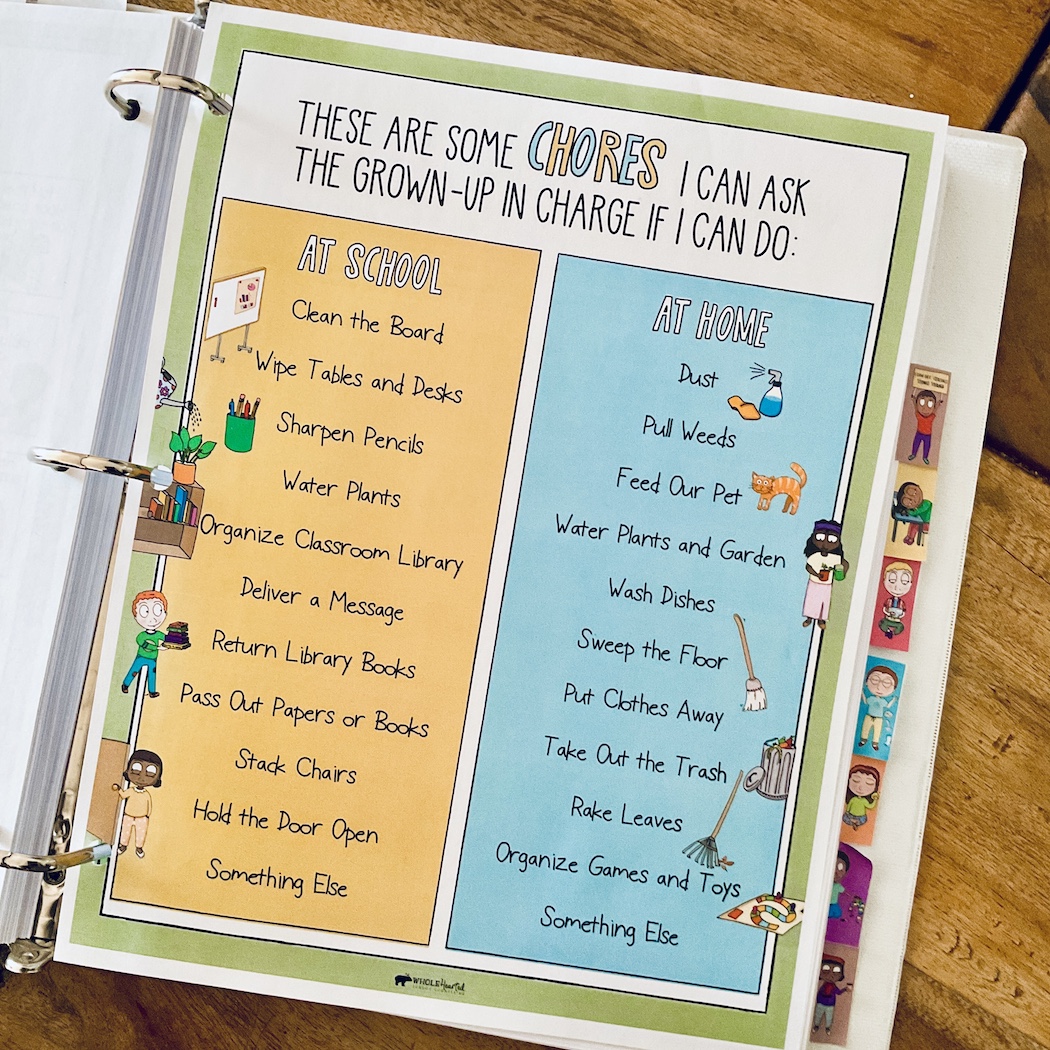
18. Assign Classroom Jobs to Students
Assigning jobs gives the student a purpose and pride in the classroom organization while also teaching responsible decision making and self-management. Not every student has to have a job all the time. These can rotate weekly through just a few students. When you are a member of the classroom and not assigned a job, you can observe how others are performing the job and pick up some tips for yourself.
19. Use Journaling
Journaling and/or daily writing is an effective way to cultivate self-awareness. There is a lot that goes on inside the minds of a little one (and the older ones too). Sometimes, if it doesn’t get released in a healthy way, it gets released as bear crawls and hawk squeals. These thoughts are not always negative or troubling, they can also be exciting and wonderful! Free form and/or guided journaling can help students to release their thoughts on paper. In addition to grow new ideas.
If you’d like a super low-prep journal that focuses on social emotional learning topics, you might really enjoy this SEL journal I created. (It’s the one I mentioned already in #5….It’s just that it’s so comprehensive I’d be remiss if I didn’t give it another shout out). It’s packed with strong visual supports. The SEL journal can be used in print or digital format. And has over 220 daily entries, which would easily cover the entire school year plus more!
20. Use Mindfulness Brain Breaks as a Coping Skill
Check out this blog post for setting up a calm corner or this one for the importance of coping skills. But when looking for a simple way to integrate an invaluable self-management coping skills into your everyday routine, this may just be my favorite: Mindfulness Breathing and Movement Exercises.
Use this as a transition activity, or when your class is scurrying around like a squirrel looking for food in the winter and need to refocus. These narrated videos are perfect because you can turn them on and then assist your class in finishing up and not have to be the one talking.
Incorporating mindfulness activities like breathing exercises and mindful movements helps students to practice self-regulation and improve their ability to focus.
I’d love to hear how many of these SEL activities you are already implementing (maybe without even realizing you get to count them as social emotional learning in your classroom)! What other strategies do you use to naturally integrate SEL into your daily school routine? Let me know! I’m excited to hear!





